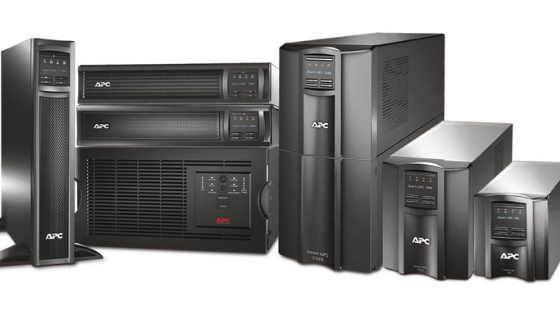The Ultimate Checklist For Purchasing a UPS
Power cut is always unpredictable. Therefore, one needs to be prepared all the time to store your most valuable information. There is nothing better than an Uninterruptible Power Supply(UPS). This small unit can save your systems and provide you enough time to keep your data safe. But many newbies get confused about the shopping store while buying UPS. they get confused over their requirements and displayed items. But don’t worry, here we will provide you with some solutions to make your choice more effective and correct. So, let’s begin
1. Choose From Varieties of UPS
- Small UPS
The most important thing you need to decide is which device can protect your systems well. What kind of problems you are facing while operating with these devices like how often the power surges, light blink rate etc. If such problems are rarely observed then connecting a small UPS is highly recommended. As such devices are also cheap because of their lower power supply. So, when the voltage drop or completely shut down - the UPS switches to work from the built-in battery and returns to a normal state upon the occurrence of energy. The biggest advantages of such devices are that they are fairly quiet, sometimes compact and also have a high QDP and a low level of heat generation. Switching time from the network to the battery is about 10 ms.
- Linear-Interactive UPS
If voltage surges in the region of 180-195 V and its disconnection are common, then you should choose linear-interactive UPS. Such devices contain absolutely all the functionality of a backup UPS, featuring a voltage regulator that allows you to adjust the voltage at the network output. In terms of efficiency, line-interactive UPSs occupy an intermediate value between backup and double-conversion UPS. The transition time from the mains supply to the battery is about 2-4 ms.
- UPS with double power conversion
Double power conversion UPS helps to protect your large number of equipments and information at server and workstation. Therefore, while purchasing it, you need to pay special attention to its power phase. Such devices produce energy in an ideal voltage for the network. These devices continuously convert alternating current into direct current, regenerating it again into alternating electricity. Due to this, the transition time from the mains supply to turn on the battery power is zero. That is called the transition occurs instantly.
2. Check Power Reservation
The first question asked about UPS is namely - what is its capacity? So, while choosing an uninterruptible power supply to check whether it has a power reserve of 20-30% of the planned network load or not. For example, if you want to save your personal computer then having a UPS with 300-500W power can be a good deal for you. But, if you want to save your other personal devices then having a UPS between 700-1500W capacity will be enough for you.
3. Consider The Battery Life
No UPS provides endless time in the absence of electricity. But with the UPS you will get enough time to save safely your information and shut down the system. Moreover, in the hospitals it provides enough time to start their other devices, so that patient will not suffer. But for this you need to check how many minutes or hours the UPS able to operate until its battery completely discharge. And is there any provision to add an extra battery to boost the power life. For this, you can also check the battery life indicated in the instructions, or on the official website of the manufacturer.
- According to your needs, choose UPSs with either computer outlets of the IEC-320-C14 standard, or Euro-sockets of the CEE 7/4 standard or rack mount ups. Basically, experts advise choosing the device where these sockets can easily combine. After all, who knows the need to protect what device you may have tomorrow.
- You should also make sure that you can replace the battery yourself since its service life is usually 4-5 years. If self-replacement is not possible, then the device will have to be sent to a specialized service center.
- The indication also plays an important role. It is much more pleasant to observe the state of the system through an informative LCD display, rather than through LED lights. It should be borne in mind that you will have to pay for the functional information when only LEDs are installed on a budget UPS.
- The presence of USB ports will allow you to save all your work on a personal computer in automatic mode. For these purposes, special software is used.
5. Avoid Common Customer Mistakes
- Choosing the wrong type of UPS can easily lead to frequent battery replacement. This is due to regularly jumping voltage in the network, the budget device often switches from to the built-in battery and spending its resources. That is why in such cases, the purchase of a linear-interactive UPS is recommended.
- Before choosing a device, correctly calculate the total power of your devices otherwise, in case of overload the UPS will simply shut down.
- Keep in mind that over time, battery capacity decreases, while reducing battery life. Replace the batteries in time so that the UPS will not turn off at the same time as the electricity.
- You should know that double conversion sources are quite noisy. Some buyers were unpleasantly surprised by this.
Bottom Line
Hope, the above-mentioned points help you to come out of major UPS buying issues. So, for the longevity of your electronic devices and storage of important information, it is essential to buy good quality ups power supply. But with them, you must consider the most common mistakes that a customer do.
Good Luck for your buying!!!




Comments
Post a Comment